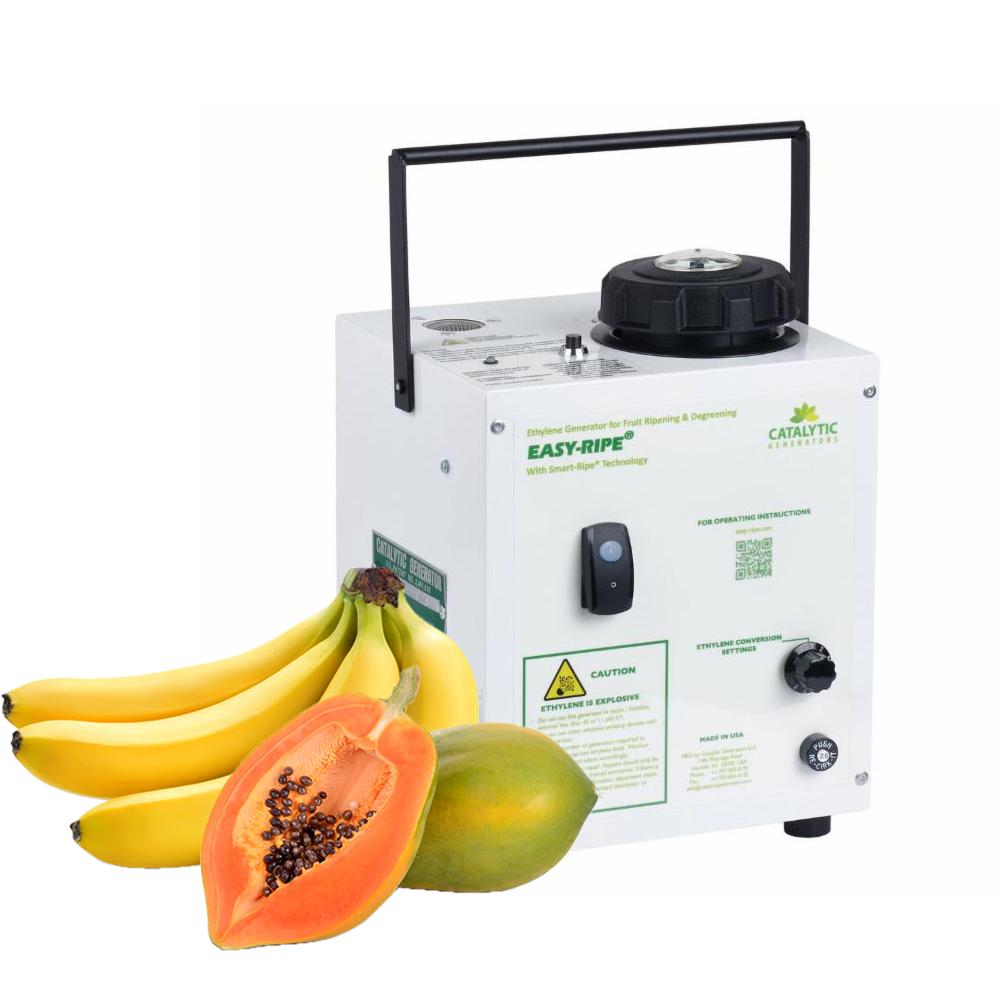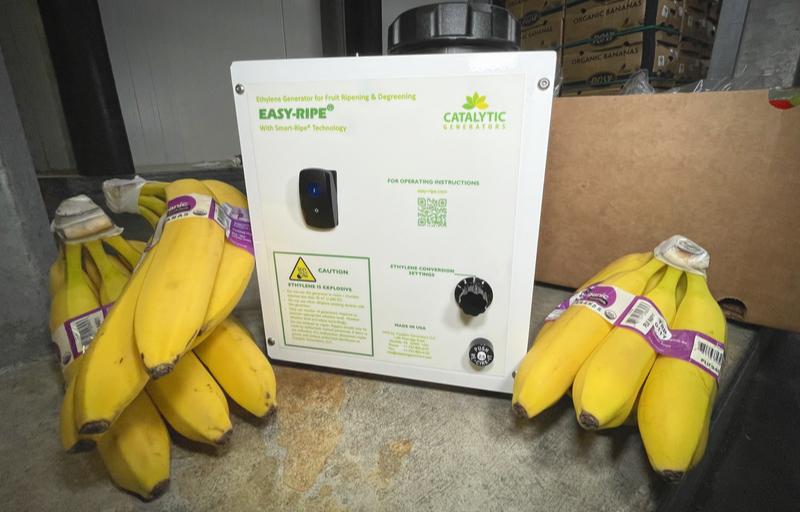Procedures for Ripening Bananas with Ethylene Application
26th Oct 2021
As the go-to potassium source, breakfast item, or quick energy supply, bananas are beloved to consumers worldwide. As a ripener, providing customers with the highest quality, perfectly ripened bananas available should be a goal across the entire fresh produce industry. The first step in providing customers with exceptional quality bananas is preparing and optimizing banana ripening rooms for ethylene application.
Preparing Your Ripening Room
 Bananas bruise easily, green or ripe. Careful handling at all stages will reduce bruising and enable you to sell the bananas for more money. Beyond this, the following recommendations are suggested within banana ripening rooms:
Bananas bruise easily, green or ripe. Careful handling at all stages will reduce bruising and enable you to sell the bananas for more money. Beyond this, the following recommendations are suggested within banana ripening rooms:
• The room must be as airtight as possible to prevent too much of the ethylene from leaking out.
• Must be sufficiently insulated to be able to properly maintain the room temperature
• Must have adequate refrigeration; the refrigeration equipment must have the capacity to accurately control the pulp temperature.
• May need heating equipment to maintain proper room temperature in cold weather.
• Rooms should be constructed so that the airflow path from the refrigeration system, through the load, and back to the refrigeration system is unobstructed.
• Refrigerated air in the room must always circulate uniformly throughout the load.
• To ensure the best quality ripened fruit, we recommend consulting with room design & build experts.
Pressurized Ripening Rooms
Perhaps the most important advancement in fruit ripening since the advent of the banana box is the development of Pressurized Ripening Rooms. The key feature of these rooms is that conditioned air is forced through the product rather than the product just being stored in a temperature-controlled room. The system passes air through each box or series of boxes before returning to the evaporator. Therefore, any “air-stacking” or “cross-stacking” of boxes is not necessary, and the result is less handling of the fruit and improved product quality. For non-pressurized rooms, the boxes of bananas should be “air stacked”. That is, the boxes should be arranged in an offset pattern to allow the air to circulate among all the boxes since a non-pressurized room design will not pass air through boxes but around them.
Airflow throughout the produce is incredibly important as bananas are extremely sensitive to temperature. “Chilling” or “cooking” damage can occur if the fruit is subject to temperatures below 56° F or excessively high temperatures for several hours. Irregular temperature exposure can be identified by external coloring. Chilled fruit causes the peel to have a smoky, dull gray appearance (this may not show up for 18 to 24 hours after chilling occurs). Cooked bananas will result in a peel that has a brown to orange appearance, may be soft, and have a short shelf life.
Ethylene Application Recommendations
Once proper quality control checks are done for the load of bananas, the amount of time ethylene is applied to bananas will vary based on the fruit maturity. Initially, ethylene should be applied for a minimum of 24 hours during the early phase of the ripening cycle (we recommend 100-150 PPM).
To achieve this, the ethylene generator settings will depend on the size of the ripening room. It should be noted that all rooms vary in terms of how air-tight they are, so if more precise PPM determination is required, air testing for ethylene PPM levels is recommended.
Ripeners can follow banana ripening guidelines listed in the “Suggested Guide for Banana Ripening”chart which includes additional pulp temperature, color index, and ventilation recommendations. When bananas are ripening, they release carbon dioxide which will build up in a ripening room. The CO2 production begins as the fruit ripens enters the “climacteric” phase or the period when bananas release ethylene and have an elevated rate of respiration (along with a great deal of other physiological changes). Respiration involves the uptake of oxygen, the release of carbon dioxide, and the breakdown of starches. Carbon dioxide concentrations above 1% (10,000 ppm) will retard ripening, delay the effects of ethylene and cause quality problems. Therefore, it is recommended to vent rooms by opening the doors for 20 minutes every 12 hours, after the first 24 hours of ripening, or by automatic control.
View Ethylene Management Solutions Here
Sources:
UC Davis. Suggested Guide for Banana Ripening.
The University of California, Division of Agriculture and Natural Resources. “Postharvest Center Publications.” UC Postharvest Technology Center, 2021, postharvest.ucdavis.edu/Library/Postharvest_Center_Publications/.
The University of California, Division of Agriculture and Natural Resources. “Postharvest Center Publications.” UC Postharvest Technology Center, 2021, postharvest.ucdavis.edu/Library/Postharvest_Center_Publications/.


